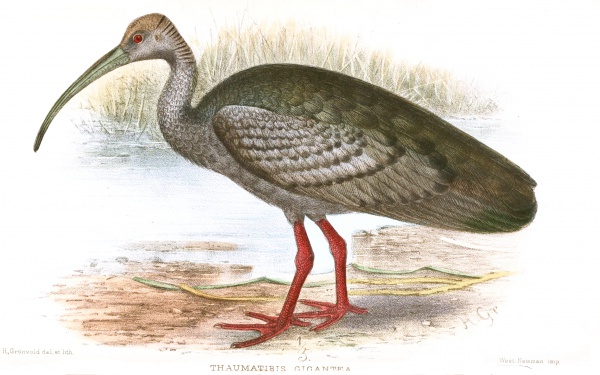Facts About Giant ibis
The giant ibis, the sole member of the genus Thaumatibis, is a remarkable wading bird from the ibis family, Threskiornithidae. These majestic birds primarily inhabit northern Cambodia, though a few can still be found in southern Laos and Vietnam. They thrive in lowland environments such as marshes, swamps, lakes, rivers, and forests.
As the largest ibis species, the giant ibis stands out with its impressive size, measuring between 102-106 cm in length and weighing around 4.2 kg. They sport dark greyish-brown feathers, a bare greyish head, and striking orange legs. Juvenile giant ibises can be distinguished by their shorter bills and brown eyes.
In terms of diet, the giant ibis is not particularly selective. Their diet comprises various aquatic invertebrates, eels, crustaceans, small amphibians, reptiles, insects, and seeds. During the rainy season, these birds build their nests in trees, where females typically lay two eggs.
Unfortunately, the giant ibis is critically endangered, according to the IUCN Red List. Their numbers are dwindling due to habitat destruction, hunting, and egg predation. Conservation efforts are underway to protect their nests and preserve their habitats, but human activities and climate change continue to pose significant threats.
Today, the giant ibis population is estimated at around 100 pairs, totaling fewer than 500 individuals. Initiatives such as promoting ecotourism and educating local communities are vital for their survival and recovery. With continued efforts, there is hope that these magnificent birds will continue to grace our planet.

 China
China